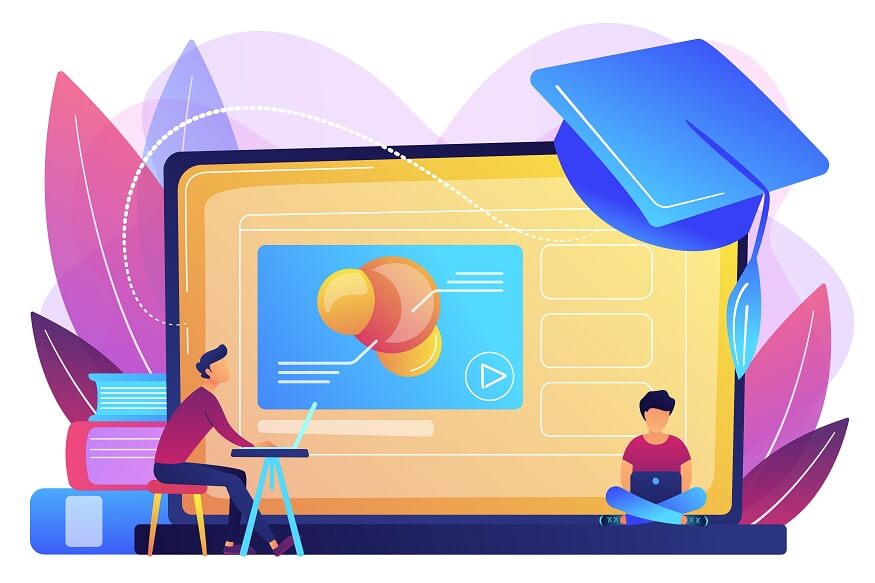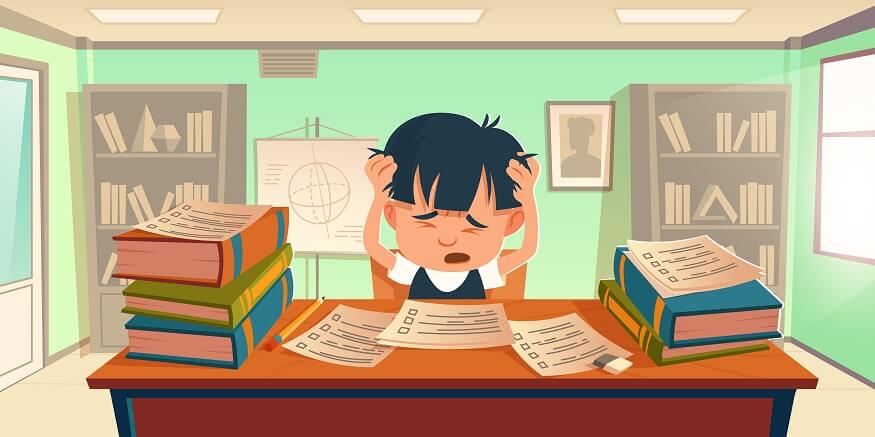Kinaesthetic learners have a natural inclination to learn by doing rather than simply observing or listening. They thrive when they can actively participate in their learning process, manipulate objects, and engage in physical activities. This learning style is based on the belief that incorporating physical movements and sensory experiences can enhance understanding, memory retention, and overall learning outcomes. Kinaesthetic learners often have a heightened need for sensory stimulation and physical interaction with their learning materials. They thrive when they can actively participate in their learning, manipulate objects, perform experiments, or engage in practical tasks. They may struggle with passive learning methods that rely solely on observation or listening.
Kinaesthetic learner meaning
Let us first understand the Kinaesthetic learner’s meaning in order to grasp further details about this. Kinaesthetic learning is a learning style in which individuals prefer to learn through physical activities and hands-on experiences. These learners rely on movement, touch, and physical engagement to understand and retain information effectively. The term “kinesthetic” refers to the sense of bodily movement and the awareness of one’s body in space.
Characteristics of Kinaesthetic Learners
Kinaesthetic learners thrive on active participation, requiring movement and hands-on experiences for better concentration and comprehension. They struggle with passive learning and benefit from a multi-sensory approach that engages touch, visuals, and auditory stimuli. Real-world applications and interactive activities, such as simulations and role-playing, resonate with their learning style.
Benefits of Kinaesthetic Learning
Kinaesthetic learning enhances understanding, memory retention, and overall learning outcomes by catering to the need for sensory stimulation and physical interaction, fostering a more inclusive and effective learning environment.
How Kinaesthetic Learners Learn
Kinaesthetic learners engage through movement, touch, and hands-on experiences, making physical activities, manipulative materials, and real-world applications essential components of their learning experience.
Kinaesthetic learning style
Here are some key aspects that characterize the Kinaesthetic learning style:
Physical engagement: Kinaesthetic learners are often characterized by their need for physical movement and activity during the learning process. They may find it challenging to concentrate or fully comprehend information without some form of physical engagement.
Hands-on experiences: Hands-on activities and experiences are crucial for Kinaesthetic learners. They prefer to interact with their learning materials directly, using their hands to manipulate objects, perform experiments, or engage in practical tasks. These activities provide a tangible and concrete understanding of abstract concepts.
Body movement: Kinaesthetic learners often benefit from incorporating body movements into their learning. They may tap their fingers, sway, gesture, or use their whole body to express or reinforce their understanding of concepts. Movement helps them process information and establish connections between their body movements and the content being learned.
Sensory stimulation: Kinaesthetic learners thrive when multiple senses are engaged simultaneously. They benefit from a multi-sensory approach that combines tactile (touch), visual, and auditory stimuli. This can involve using physical props, visual aids, or even music or rhythm to enhance their learning experience.
Real-world applications: Kinaesthetic learners often seek connections between their learning and real-world applications. They prefer to understand how the knowledge they acquire can be practically applied in their lives or specific contexts. They may excel in learning through simulations, role-playing, or problem-solving activities that mirror real-world situations.
Action and interaction: Kinaesthetic learners learn best when they can actively engage with their environment and interact with others. Collaborative activities, group discussions, and opportunities for hands-on exploration and experimentation are highly effective for their learning style.
It is important to recognize that while individuals may have a predominant learning style, such as kinaesthetic learning, incorporating a variety of learning approaches can benefit learners with different preferences. Educators can provide opportunities for Kinesthetic learners to actively engage with the material through movement, touch, and hands-on activities, fostering a more inclusive and effective learning environment.
Teaching Methods for Kinaesthetic Learners
To meet the needs of Kinaesthetic learners, educators can utilize various teaching methods, including hands-on experiments for direct engagement with science concepts, role-playing and simulations for a deeper understanding of historical events, and building models to reinforce abstract concepts visually. Aligning physical games and activities with the content makes learning interactive, while manipulative materials like blocks or flashcards facilitate hands-on exploration. Integrating dance or movement represents events kinaesthetically, and organizing field trips provides real-world, hands-on engagement. Sensory activities involving touch, smell, or taste enhance the learning experience, and arts and crafts contribute to visual representation and hands-on exploration. Collaborative projects with physical components encourage teamwork and interaction among Kinaesthetic learners.
Kinaesthetic learning activities
Kinaesthetic learning activities are designed to cater to the needs of Kinaesthetic learners, allowing them to engage their bodies and senses in the learning process. Here are some examples of Kinaesthetic learning activities:
Hands-on experiments: Conduct science experiments or demonstrations that require students to manipulate materials, perform measurements, and observe outcomes. This can help them understand scientific concepts through direct experience.
Role-playing and simulations: Engage students in role-playing activities where they act out historical events, literary characters, or real-life scenarios. This allows them to physically embody the roles and gain a deeper understanding of the subject matter.
Building models: Encourage students to build models or create visual representations of concepts or structures. For example, constructing a model of a solar system or building a replica of a historical monument can provide a hands-on experience that reinforces learning.
Physical games and activities: Incorporate physical games or activities that align with the content being taught. For instance, playing a math-based scavenger hunt, creating a human number line, or participating in a grammar relay race can make learning more interactive and enjoyable.
Manipulative materials: Provide students with manipulative materials like blocks, puzzles, or flashcards to explore and manipulate while learning. These physical objects can help them visualize and understand abstract concepts in subjects like mathematics, language arts, or geography.
Dance and movement: Integrate movement and dance into the learning process. For example, choreographing a dance routine to represent historical events or using body movements to demonstrate scientific principles can reinforce understanding and memory retention.
Field trips and real-world experiences: Take students on field trips or organize educational outings that allow them to engage with the subject matter in a hands-on way. Visiting museums, science centres, and historical sites, or participating in outdoor exploration activities can provide valuable kinaesthetic learning opportunities.
Sensory activities: Incorporate sensory activities that involve touch, smell, or taste to enhance learning. For example, conducting a texture scavenger hunt, creating sensory bins, or performing taste tests related to a cultural study can engage multiple senses and deepen understanding.
Arts and crafts: Integrate artistic activities into the learning process, such as drawing, painting, sculpting, or collage making. These activities can help students visually represent concepts and encourage hands-on exploration.
Collaborative projects: Assign group projects that require physical collaboration and interaction. Inclusive teaching practices should involve accommodating the diverse needs of all students in your classroom through various types of instruction suited to their respective learning styles. For instance, consider offering opportunities for Kinaesthetic learners by assigning group projects with physical components which allow them to work together while exploring key concepts. Examples may comprise building bridges or creating stage performances based on literary works woven into their curriculum study plan. Offering collaborative exercises where teamwork is encouraged helps foster communication skills and socialization between peers while helping them interactively learn new concepts.
Conclusion
At Euroschool, we understand that kinaesthetic-style learning is an esteemed educational method because it centres around engaging students through tactile experiences. Kinaesthetic learners thrive when they have hands-on opportunities to move around during the curriculum itself. When academics include courses like physical sciences or design classes into their pedagogy with strategies like touching items or manipulation techniques with real-life applications will aid in creating a more inclusive classroom community.
This method involves a wide range of valuable approaches that cater directly to the needs of such learners including key stepping stones like trial-and-error problem-solving methods or group creative projects that include visual aids such as models. Further adventures in extra-curricular options allow for even more progress towards enhanced retention including collaborative ventures purposed toward exploring pre-existing excitement in connection with subjects; dance programs which offer perspectives outside traditional teaching methods; interactive field trips which offer immediate access to applications in students’ lives; sensory experiences that position students’ senses to gain insights from subject matter contextually; fine arts programs providing additional outlets related to educational material area exploration. Embracing kinetic learning aids progress for students of all academic levels in the classroom or home-school context, while also embracing diverse student abilities and varied learning desires to enable a well-rounded education.
such learners including key stepping stones like trial-and-error problem-solving methods or group creative projects that include visual aids such as models. Further adventures in extra-curricular options allow for even more progress towards enhanced retention including collaborative ventures purposed toward exploring pre-existing excitement in connection with subjects; dance programs which offer perspectives outside traditional teaching methods; interactive field trips which offer immediate access to applications in students’ lives; sensory experiences that position students’ senses to gain insights from subject matter contextually; fine arts programs providing additional outlets related to educational material area exploration. Embracing kinetic learning aids progress for students of all academic levels in the classroom or home-school context, while also embracing diverse student abilities and varied learning desires to enable a well-rounded education.










